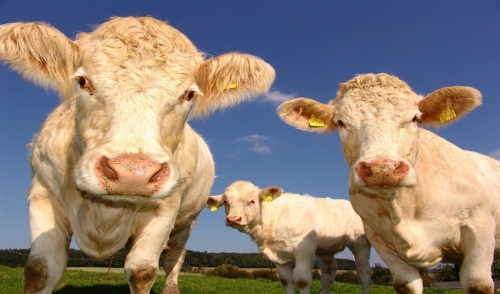{article.name}
Stay Informed
Adjusting Your Cattle to the Changing Seasons

- Share this:
- Share on Facebook
- Pin on Pinterest
- Tweet on Twitter
Acclimating yourself to the frigid winter months is certainly a difficult task following the warmth of summer and fall. Furnace maintenance, firewood stacking, and digging out your long johns all become obligatory chores at this time of year. But adjusting to changing seasons is even more difficult for your cattle and other livestock, who don’t have the luxury of retiring next to the wood burning stove in the evening. The effects of seasonal variability on cattle performance and eventual profitability are often complicated to understand. Season is a crucial factor in determining the longevity, health, and eventual financial prosperity you garner from your cattle.
As temperatures drop in the winter, your livestock will require more energy to maintain homeostasis. Homeostasis is the ability of any living thing to regulate its vital conditions at a consistent level. Your cattle will need larger quantities of nutritious feed to flourish amidst cooler temperatures throughout the winter, speeding up its metabolism to compensate for body heat lost. Numerous studies have shown a decrease in the ability to digest certain nutrients in cattle during prolonged exposure to cold weather. Cold stress is an important factor to keep in mind as you stock up on feed to last for the winter months.
Adjusting your cattle to changing seasons will also intrinsically influence calving seasons. Choosing the calving season is a very particular decision for ranchers and livestock owners that carry various financial and temporal implications. In pasture based cattle operations, wintertime may be a difficult time for calving since the forage demand simply outweighs the supply. Cattle forage production and maintenance is evidently greatest in the late spring and summer months and gradually decreases in the fall, dropping to its lowest point in the winter. This presents a complex and personal conundrum for livestock owners in resolving how to maintain limited forage for both cows and calves when the demand for forage outweighs the supply.
Ranchers and veteran livestock owners recommend planning calving in the late winter and early spring. Newborn calves will find sustenance while pasture-based forage grows in the spring and into summer. Forage will then be plentiful in quantity, and rich in nutrients that will ensure calf development. In the greater realm of cattle adjustment to seasons, keep in mind that in depth research projects have often yielded inconclusive results and that it is a multifaceted issue among livestock owners. Keeping cold stress, forage nutrition and availability, and calving are some of the more important factors to keep in mind. Don’t let past failures or gossip from your neighbor discourage you from adjusting your cattle to the changing seasons.
Special Offers
We are constantly adding new specials to our site. Be sure to check back often!


Comments